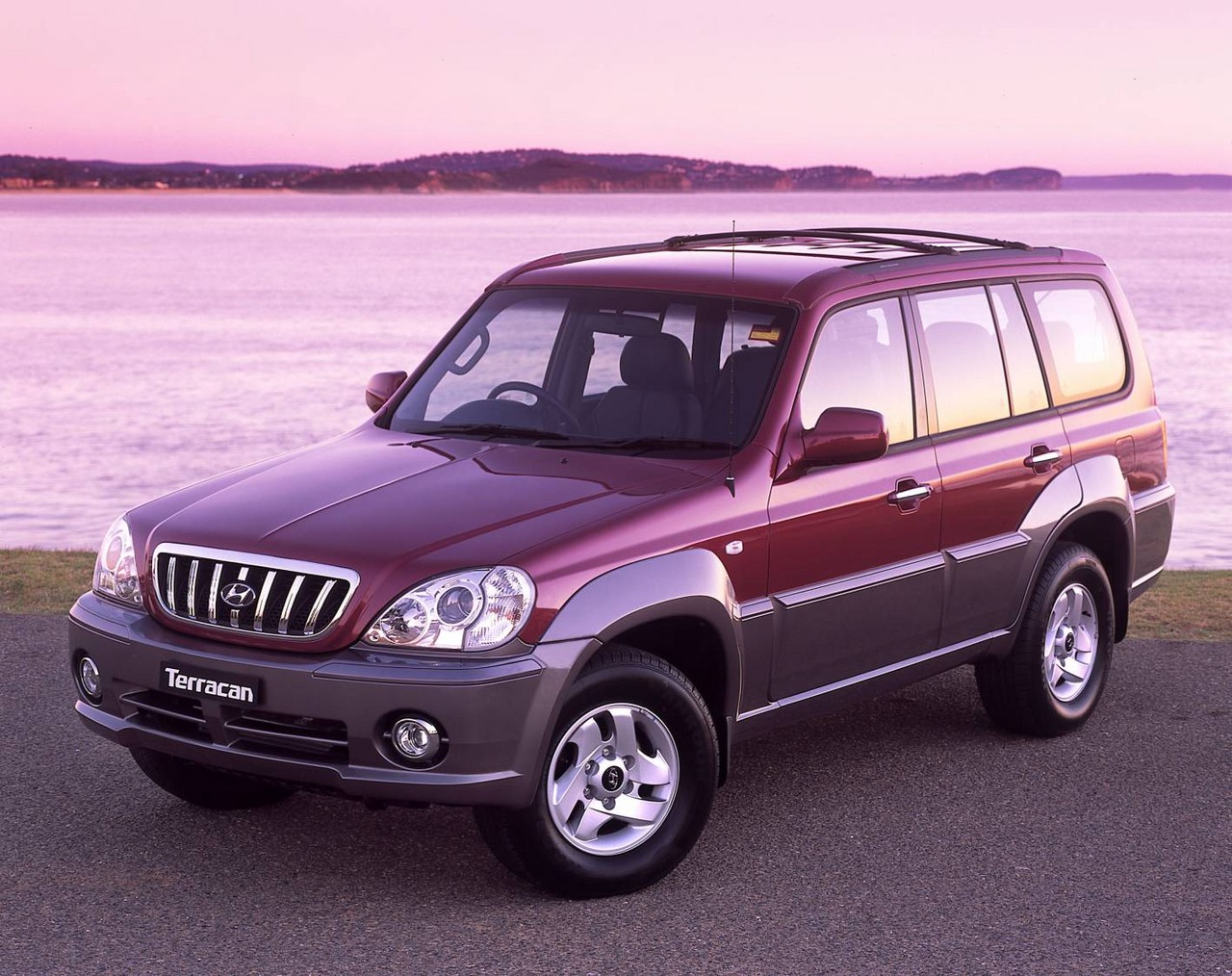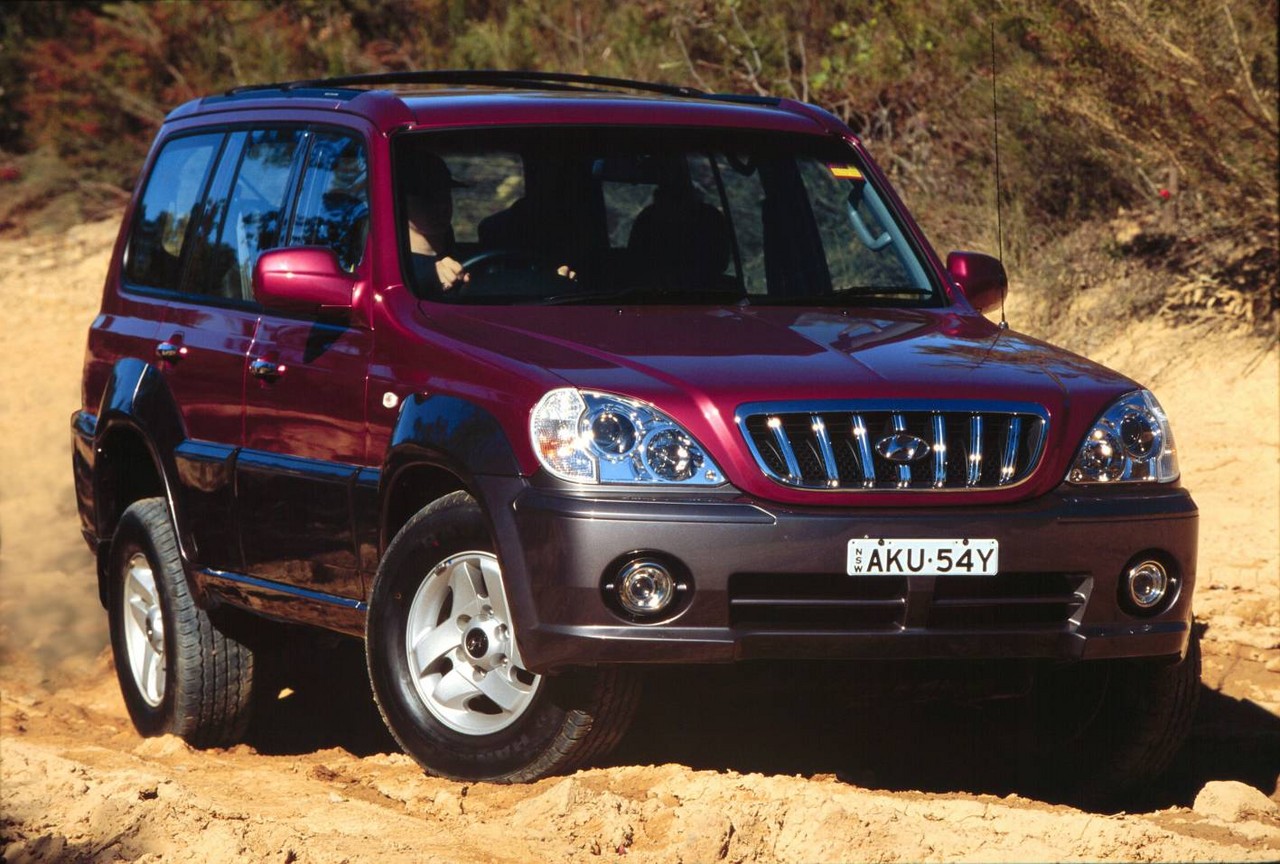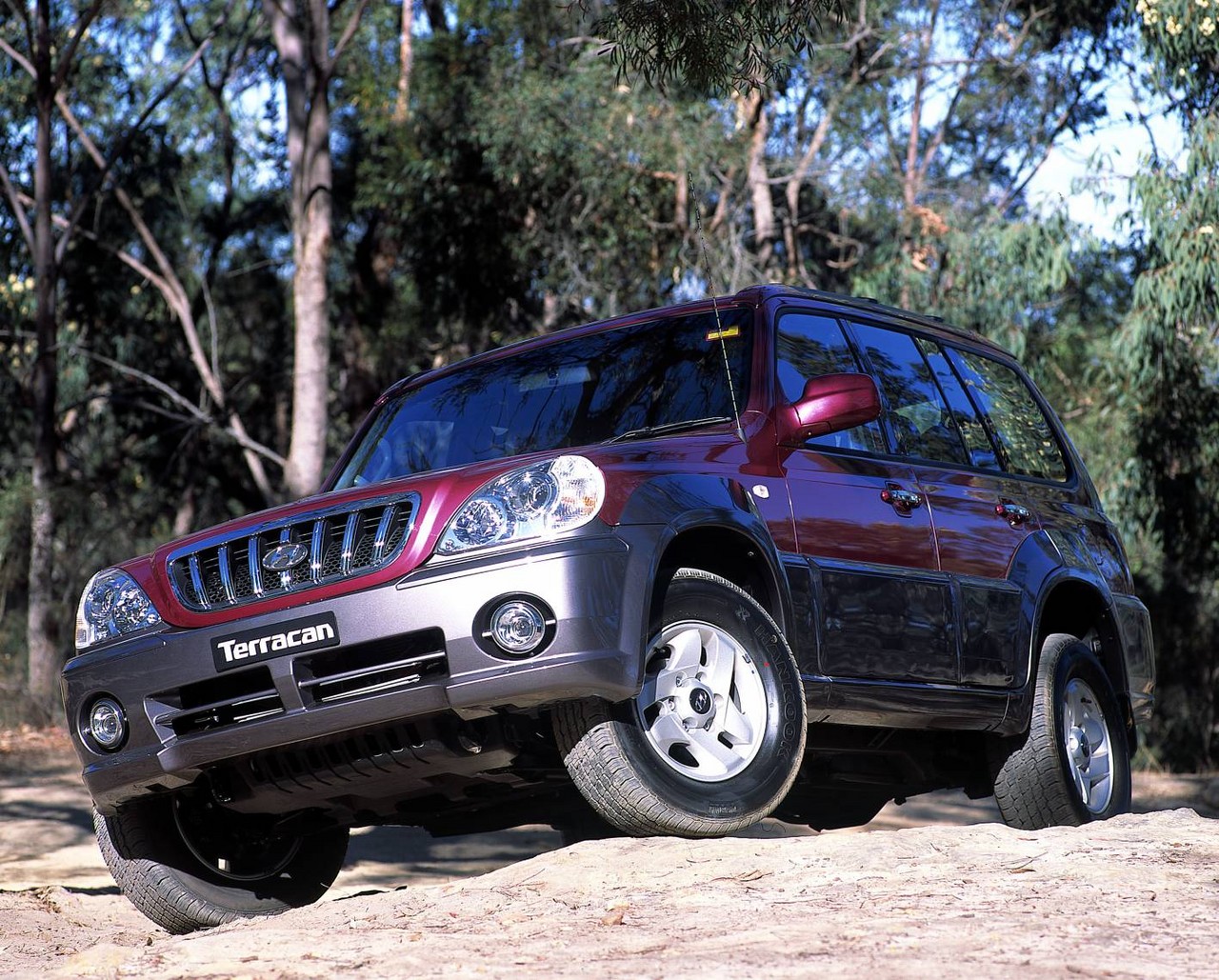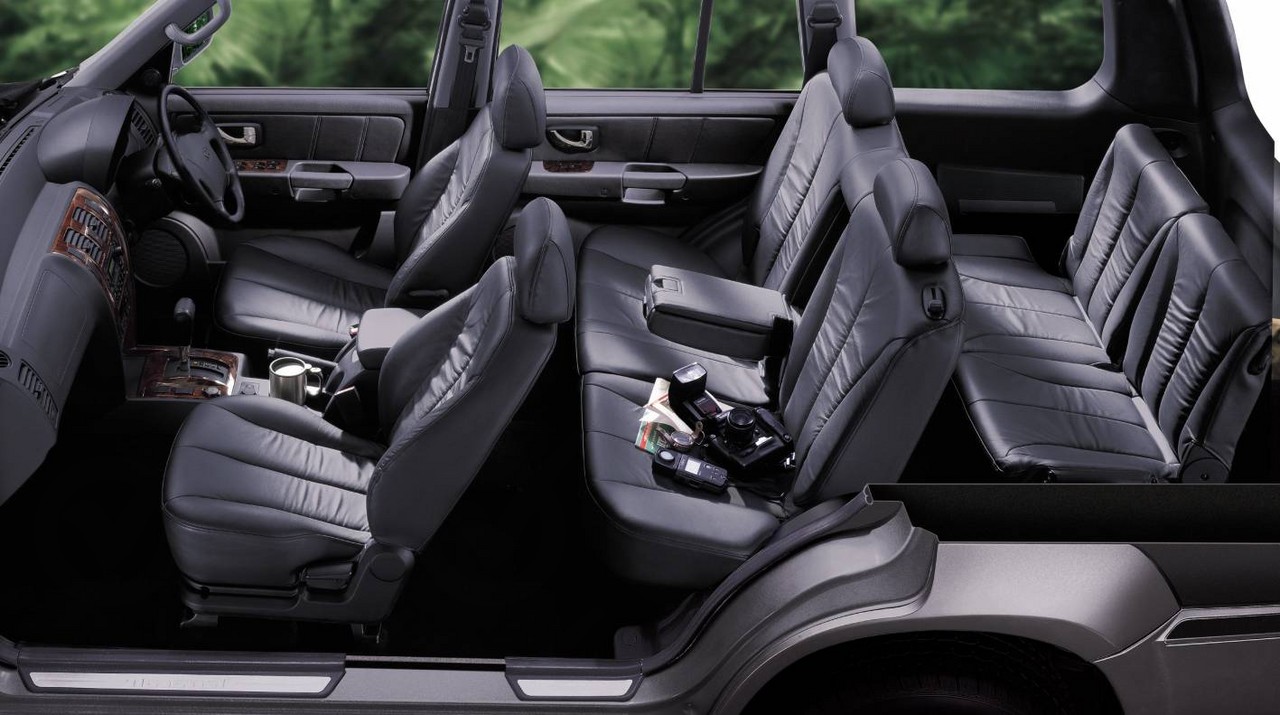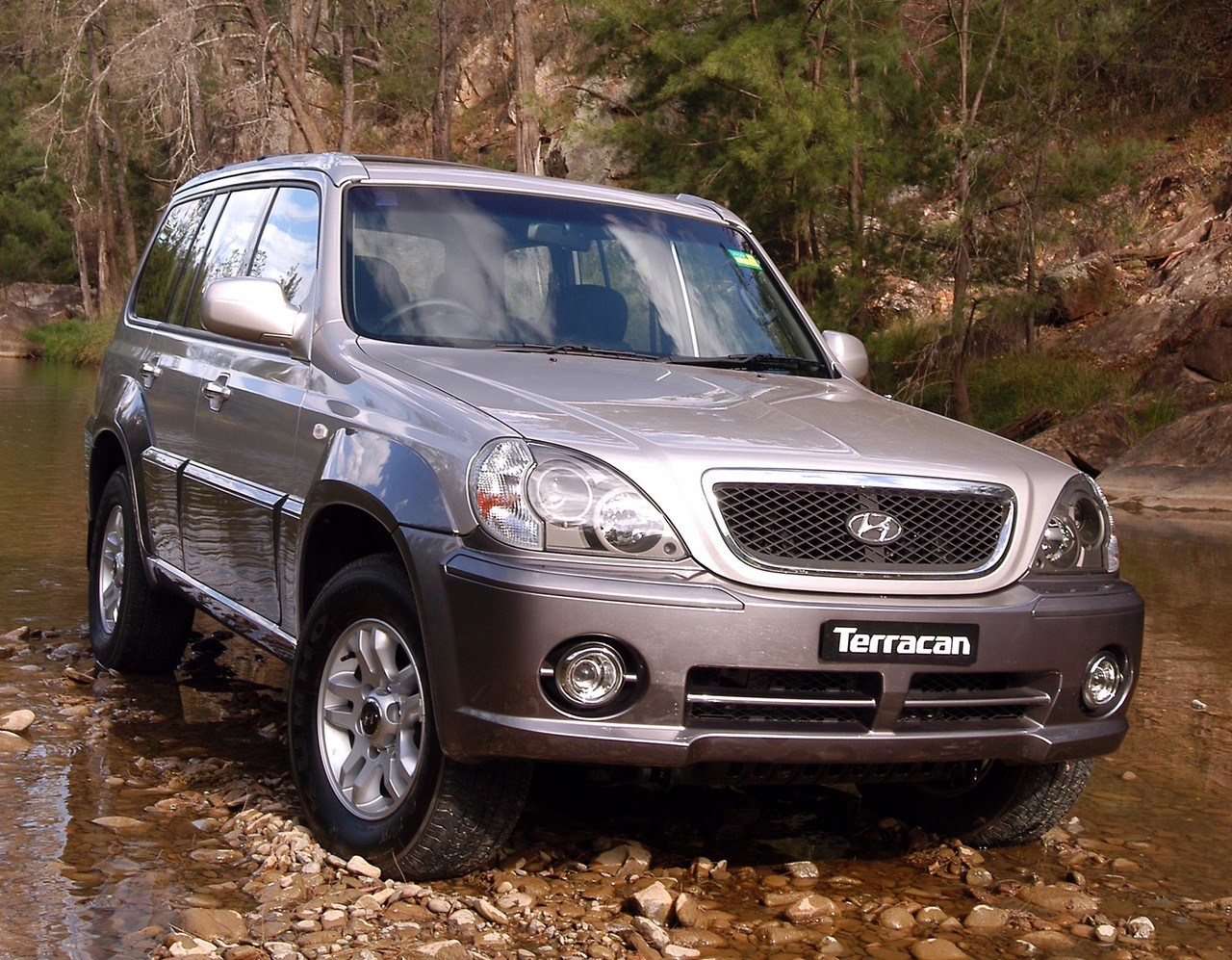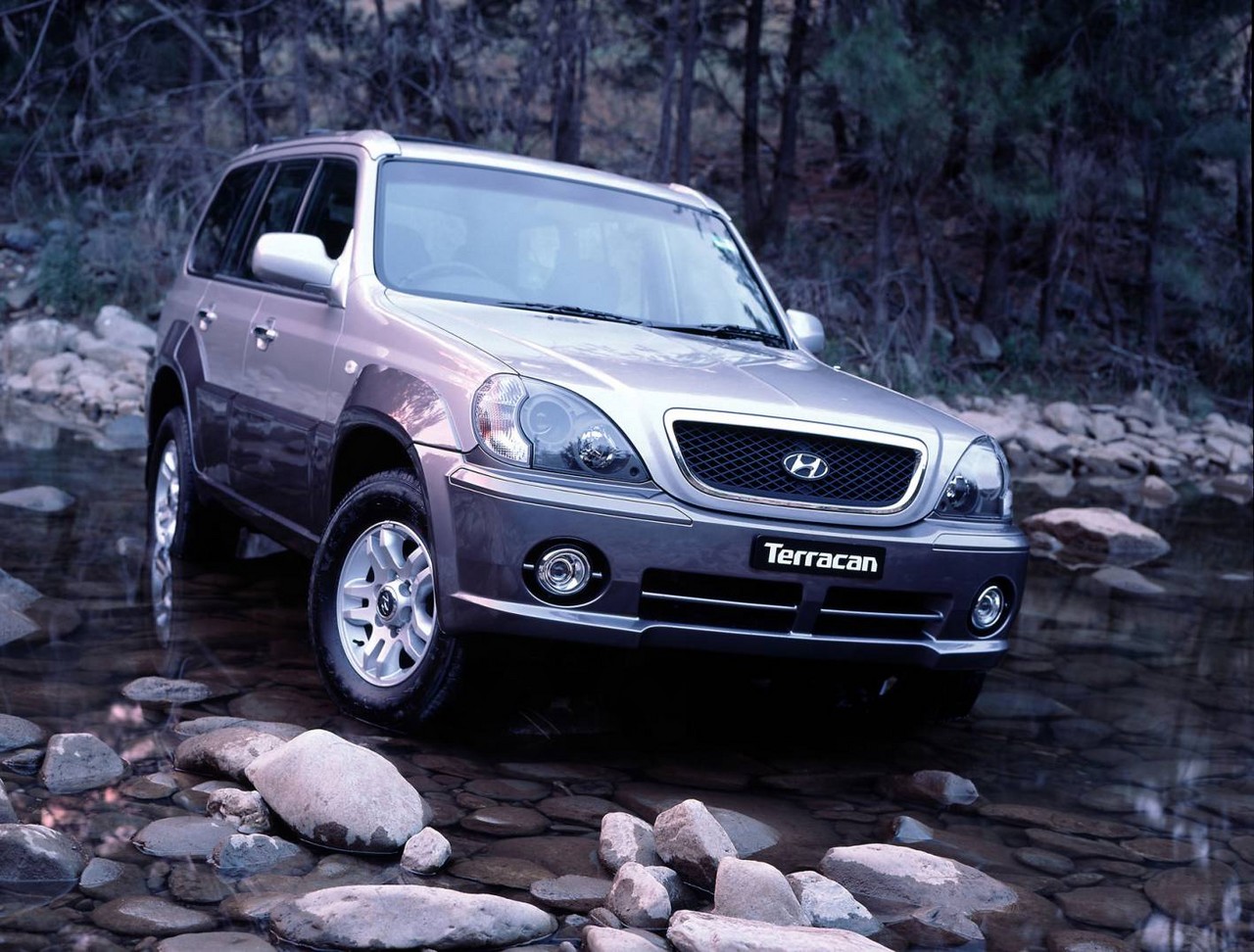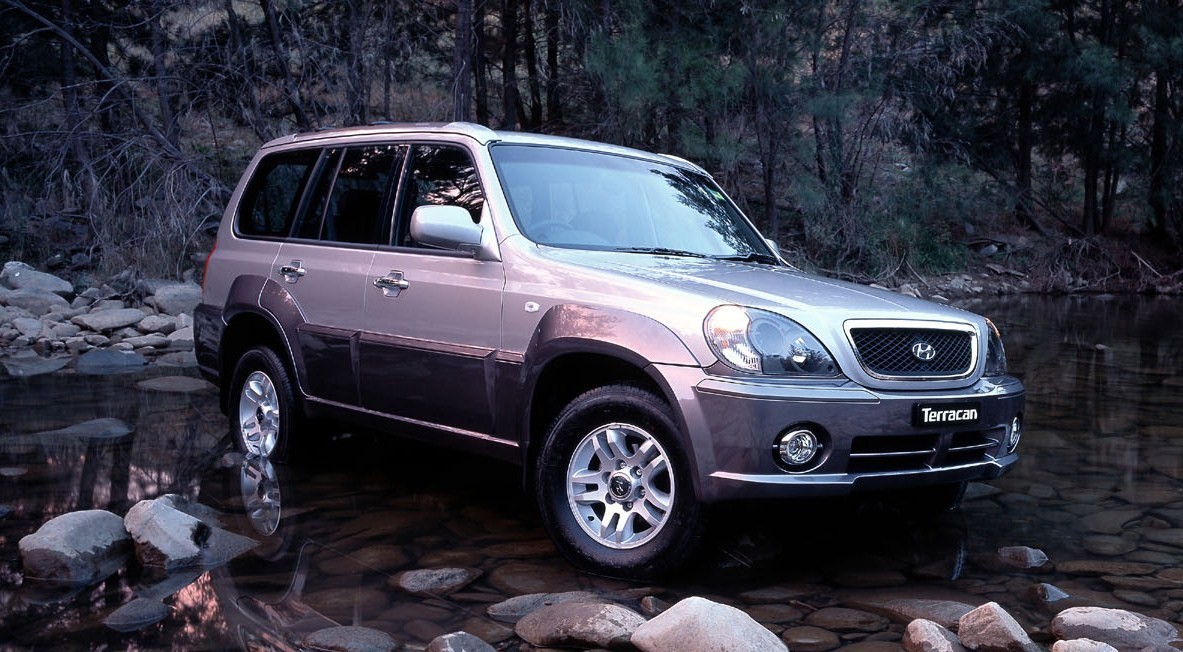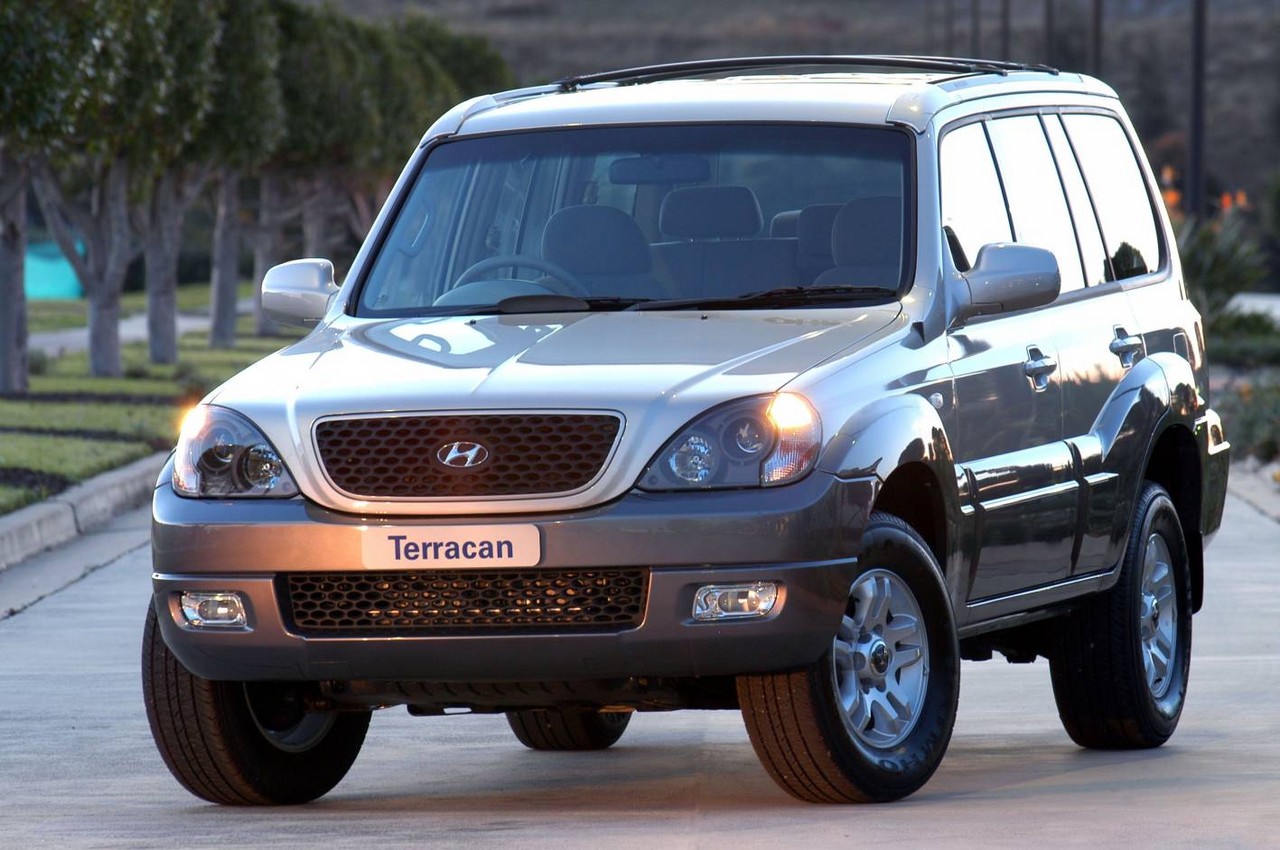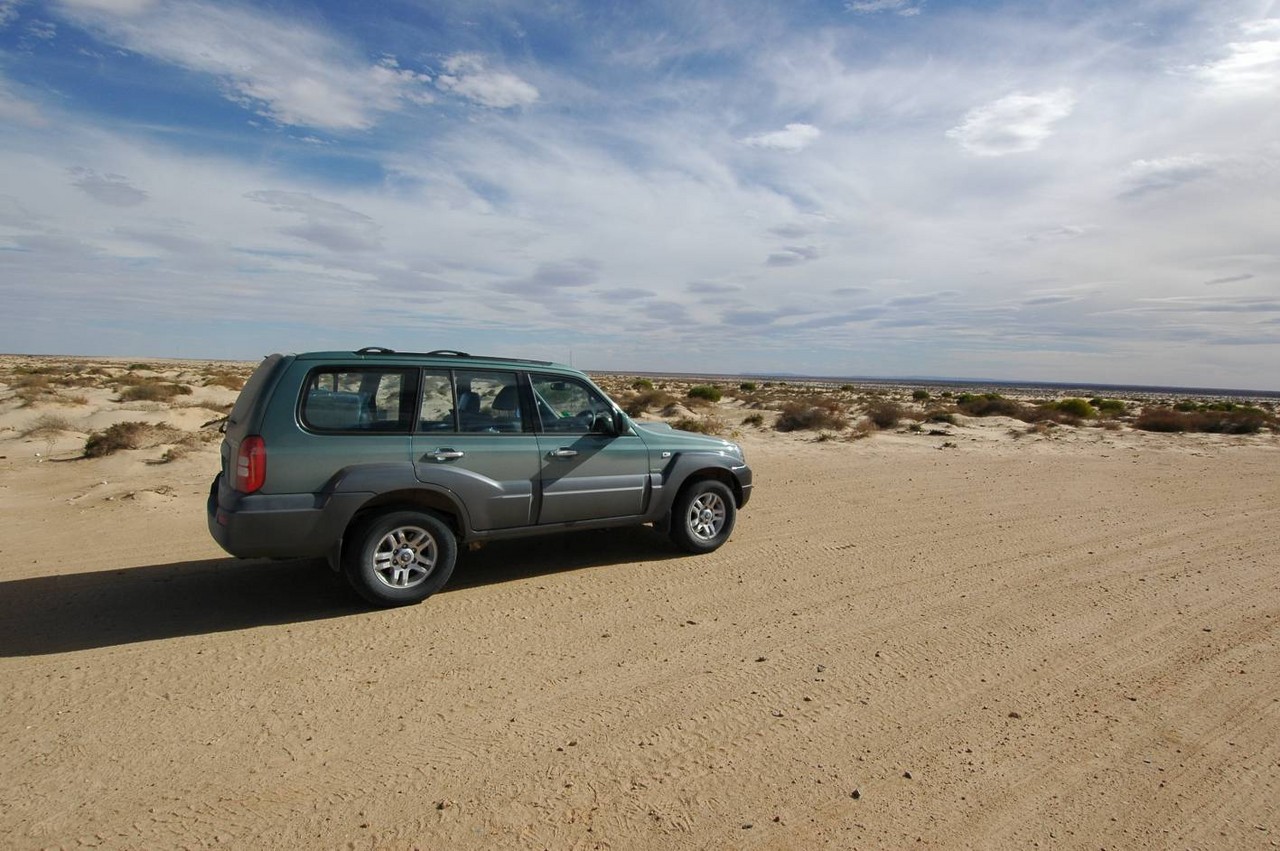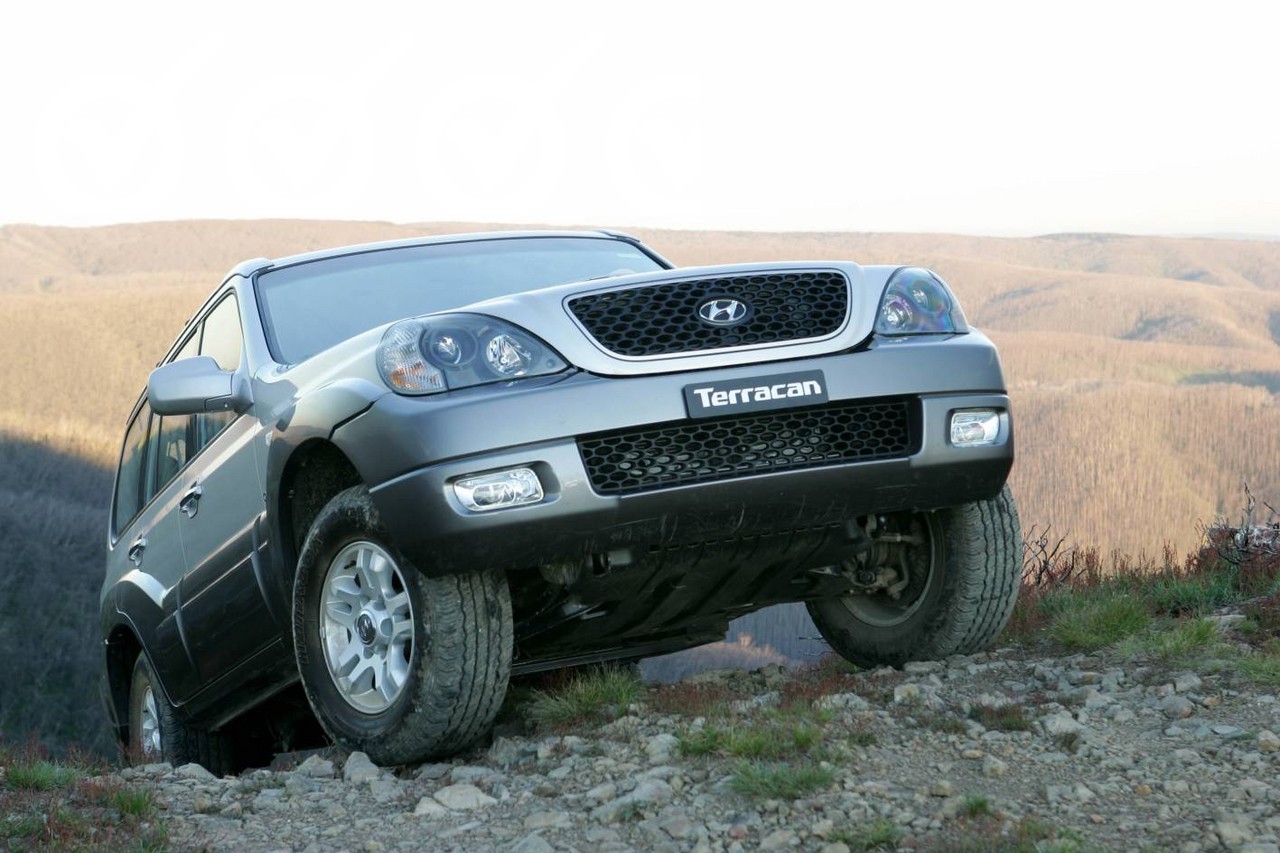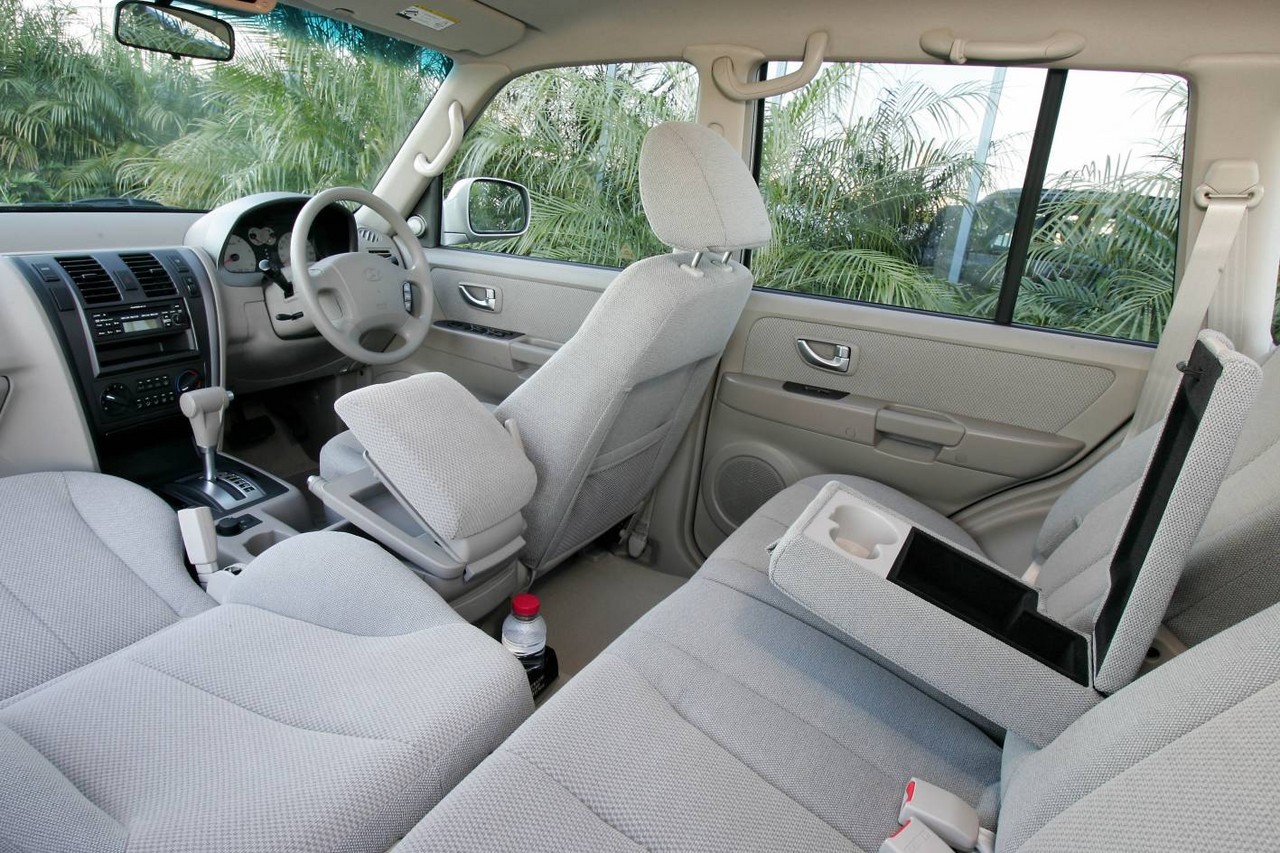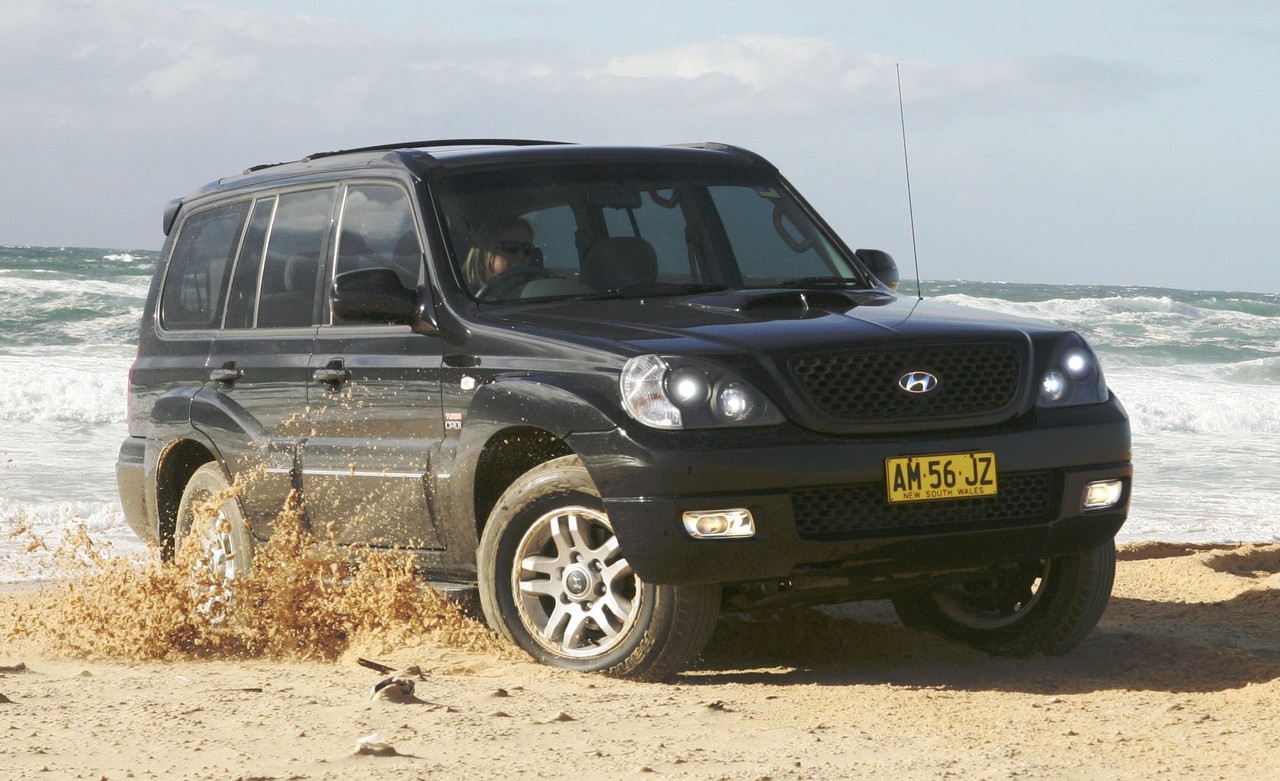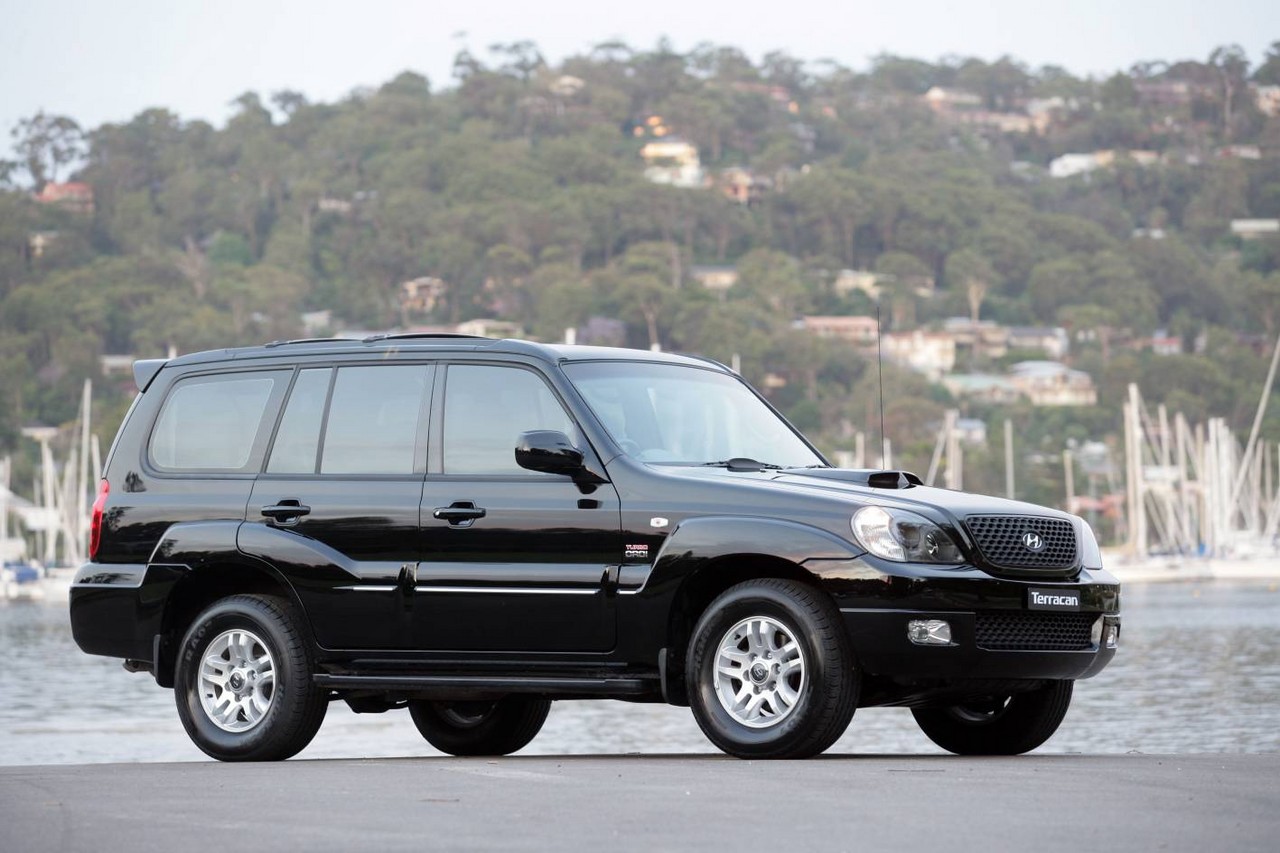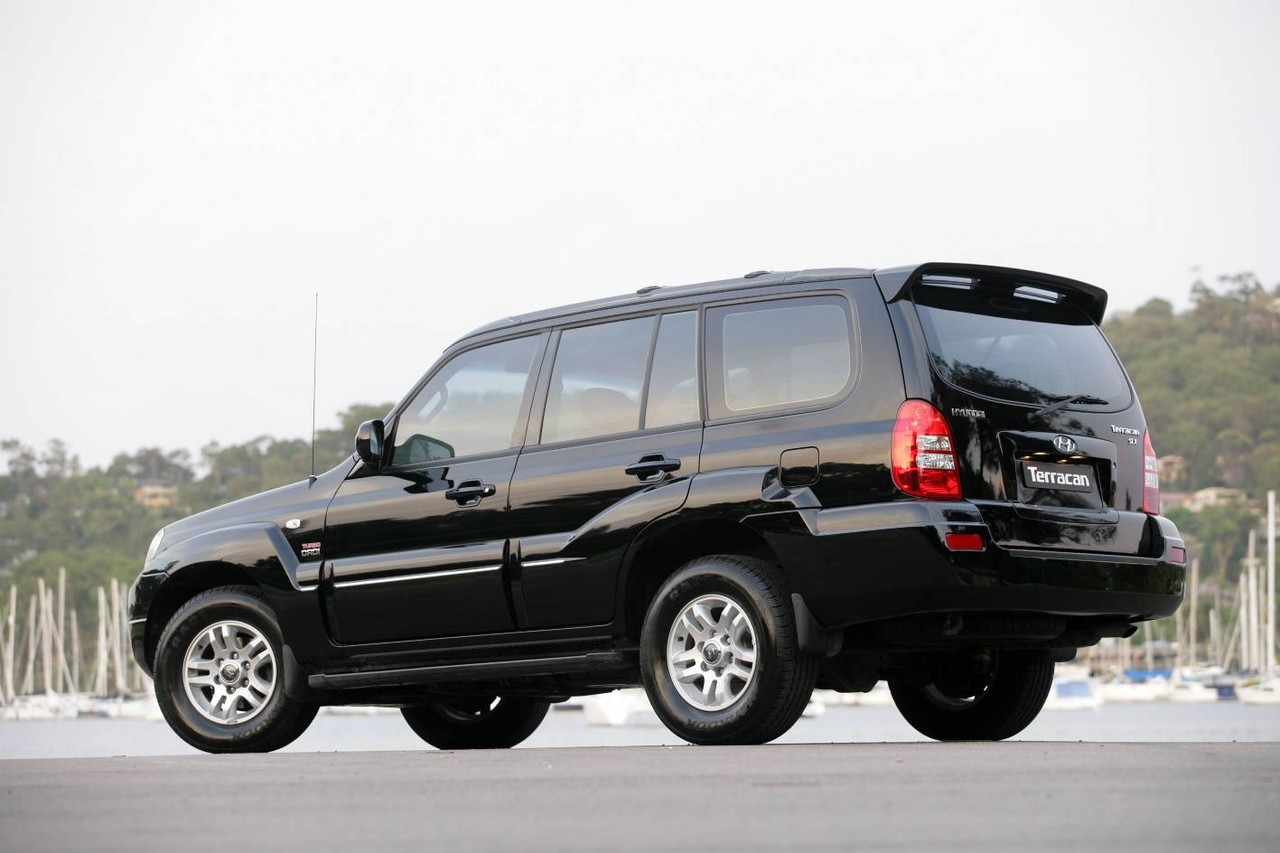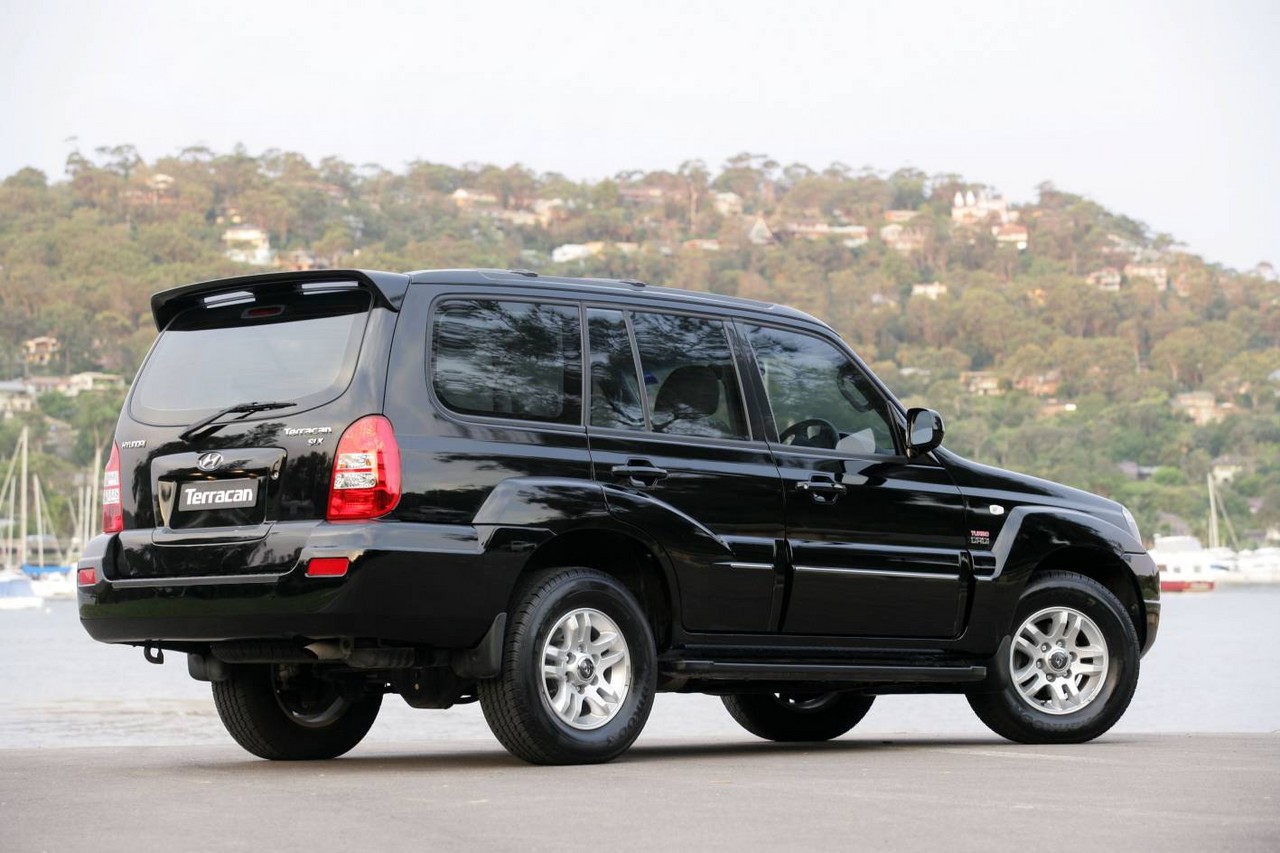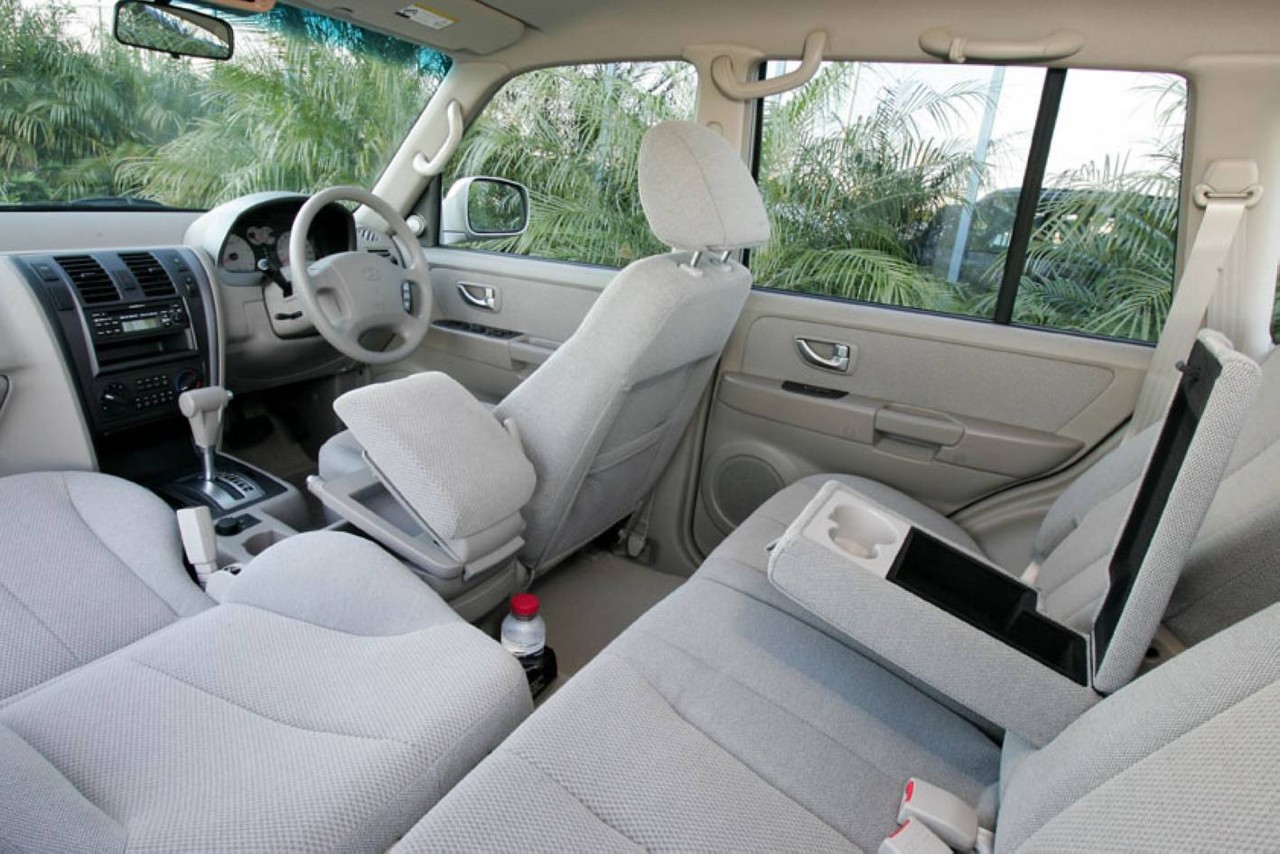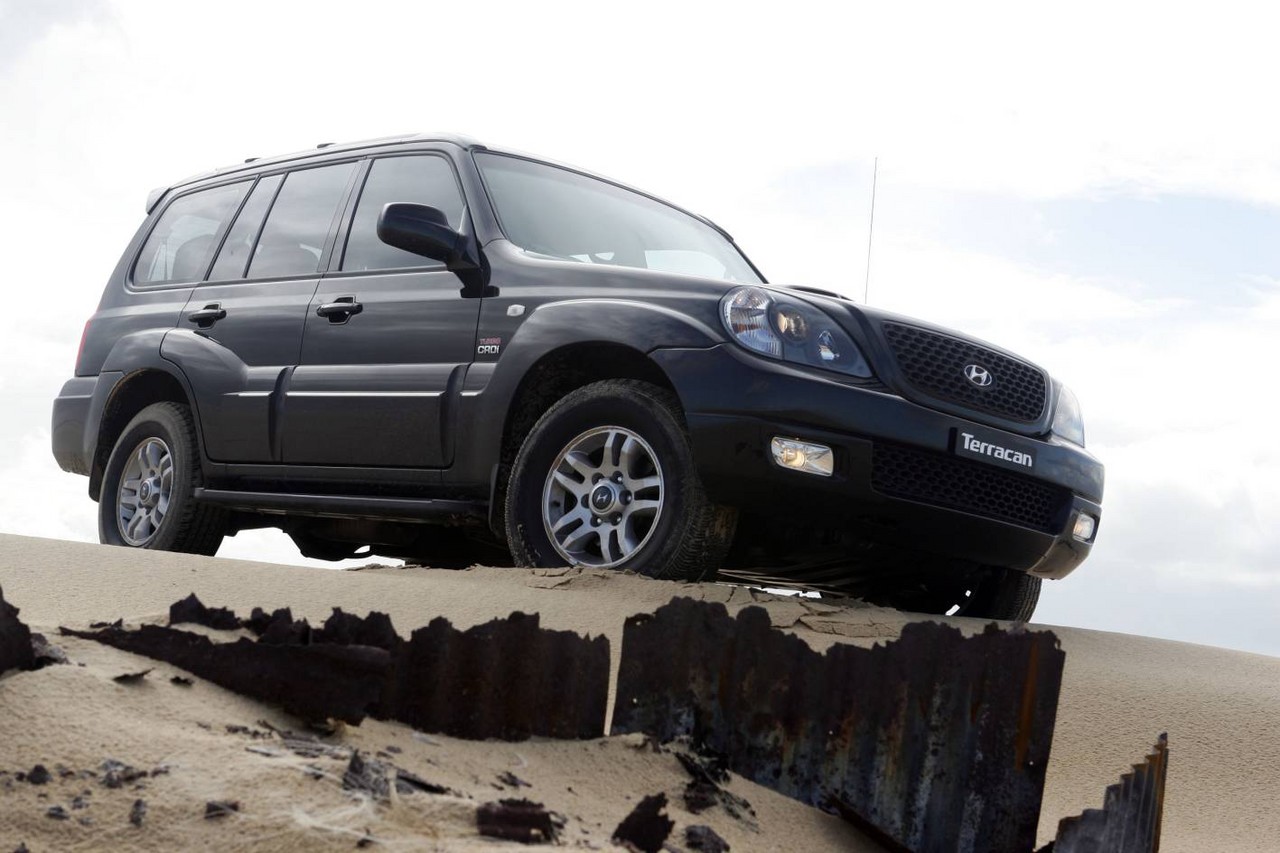
- Refined 3.5-litre V6 petrol engine
- 2.9-litre turbo-diesel engine brings grunt
- Comfortable interior
- Off-road capability
- Suspension lacks body control, compliance and is noisy
- Flat front seats lack support
- Recirculating ball steering lacks precision and feel
- V6 petrol engines are thirsty
Review: Hyundai HP.I Terracan (2001-06)
Overview
Released in November 2001, the Hyundai HP Terracan was a seven-seat wagon available in all-wheel and four-wheel drive models. Manufactured in Ulsan, South Korea, the Terracan was initially powered by a 3.5-litre V6 petrol engine, though 2.9-litre turbo-diesel engines (the CRDi variants) were introduced in 2005. The Terracan was available in an unnamed, entry-level edition and the Highlander – the full range is given in the table below.
G6AU and J3 engines
Of the engines,
- the 3.5-litre G6AU ‘Sigma’ V6 petrol engine had a cast iron engine block, aluminium cylinder heads, double overhead camshafts (per cylinder bank), forged steel connecting rods, four valves per cylinder and a compression ratio of 10.0:1; and,
- the 2.9-litre J3 ‘J-Series’ turbo-diesel engine had a cast iron engine block, aluminium cylinder heads, common-rail direct injection (operating at 1600 bar), double overhead camshafts, four valves per cylinder and a compression ratio of 18.4.
Dimensions and suspension
The HP Terracan had a ladder-on-frame chassis and was 4710 mm long, 1860 mm wide, 1840 mm tall and had a 2750 mm long wheelbase. Furthermore, the Terracan had double wishbone front suspension with torsion bars and a stabiliser bar, while the five-link coil sprung rear axle included a stabiliser bar and was located by twin lower longitudinal arms, slightly angled twin upper rods and a panhard rod.
| Variant | Editions | Engine | Years | Trans. | Peak power | Peak torque |
|---|---|---|---|---|---|---|
| V6 | [Unnamed], Highlander | 3.5-litre petrol V6 | 2001-06 | 4sp auto, 5sp man. |
145 kW at 5500 rpm | 302 Nm at 3000 rpm |
| CRDi | [Unnamed], Highlander | 2.9-litre turbo-diesel I4 | 2005-06 | 4sp auto, 5sp man. |
120 kW at 3800 rpm | 345 Nm at 1750-3000 rpm |
4WD system
The entry-level Terracan had a part-time four-wheel drive system with ‘Electric Shift Transfer’ (EST) and could switch from rear-wheel drive to four-wheel drive at speeds of up to 80 km/h via a rotary knob on the centre console.
The Highlander was equipped with a full-time, on-demand all-wheel drive system with Active Torque Transfer. In normal conditions, drive was directed solely to the rear wheels, but up to 50 per cent of the engine torque could redirected to the front wheels if traction was lost.
Both the entry-level and Highlander editions were fitted with dual range transmissions – with a low range reduction gear ratio of 2.48:1 – and a limited slip rear differential. Automatic models also had a hill descent mode.
Safety equipment
Standard safety equipment for the HP.I Terracan included dual front airbags, anti-submarining front seat pans and front seatbelts with pretensioners and load limiters; the Highlander was also equipped with ABS and electronic brake force distribution. However, in the first shipment of the Terracan, there were discounted Highlander editions which omitted ABS and electronic brake force distribution. From February 2004, ABS and electronic brake force distribution were standard across the range.
Features
Standard Terracan features included 16-inch alloy wheels with 255/65 tyres, a six speaker sound system with CD player, air conditioning, cruise control, front and rear fog lights, remote central locking, driver’s seat height and lumbar adjustment, 60/40 split and folding second row seats, 50/50 split and folding third row seats, power windows and mirrors, 12 volt power outlets, roof rails, alarm and immobiliser.
Beyond this, the Highlander added climate control air conditioning, leather and woodgrain trim.
2002 Terracan World Cup
In May 2002, ‘World Cup’ badged models of the Terracan were released; the ‘World Cup’ models were distinguished by their grille guards, chrome side steps, 2500kg-rated tow-bar kit, headlight protectors, slim-line weathershields for the front windows and ‘World Cup’ floor mats
February 2004: Terracan update
In addition to ABS and electronic brake force distribution, the post-February 2004 models also featured MP3-compatibility. Visually, these models could be identified by their new alloy wheels designs and dark grey mesh grille and headlight housing.
October 2004: Terracan update
In October 2004, the HP.I Terracan was updated – for the 2005 model year – with a subtle facelift, new centre console, white-faced instrument dials, satin-chrome interior finishes and a 12 volt power outlet for the middle row of seats. The post-October 2004 Terracans could be identified by their matt charcoal honeycomb grille inserts, slimmer front bumpers with rectangular fog lights, rounder rear bumpers and re-shaped side cladding.
Review: Hyundai HP.II Terracan (2006-08)
Overview
Released in November 2006, the HP.II introduced a revised range and subtle facelift. The V6 and CRDi variants continued, but the entry-level edition was renamed the SLX and the Highlander was discontinued. Visually, the HP.II Terracan was distinguished by its body-coloured rear roof spoiler and matt black side steps with alloy chequerplate inserts. Safety equipment and features, however, were substantially the same as for the HP.I Terracan.
| Variant | Edition | Engine | Trans. | Peak power | Peak torque |
|---|---|---|---|---|---|
| V6 | SLX | 3.5-litre petrol V6 |
4sp auto, 5sp man. |
145 kW at 5500 rpm | 302 Nm at 3000 rpm |
| CRDi | SLX | 2.9-litre turbo-diesel I4 |
4sp auto, 5sp man. |
120 kW at 3800 rpm | 345 Nm at 1750-3000 rpm |
Related links
